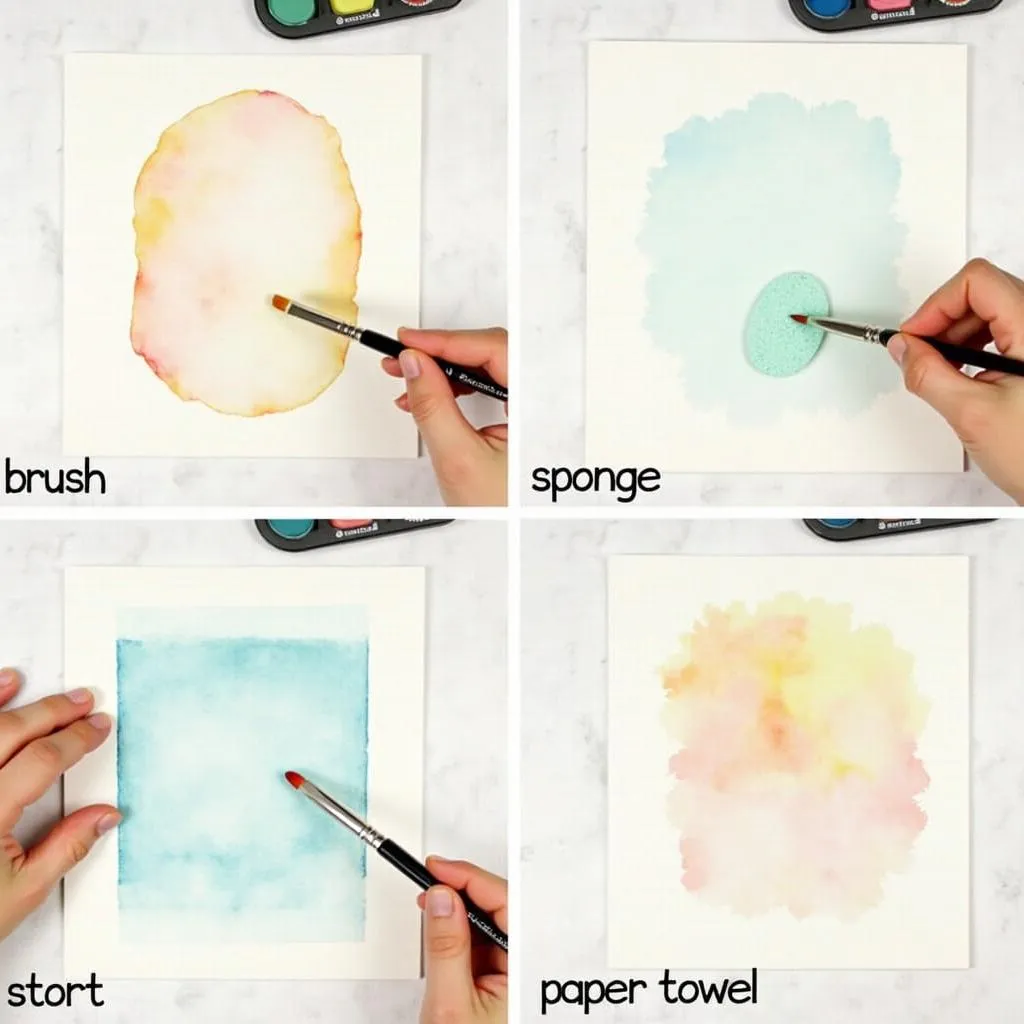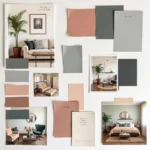Watercolor painting is a rewarding and versatile medium that allows artists of all levels to create stunning and expressive artworks. The beauty of watercolor lies in its transparency and fluidity, creating delicate washes and vibrant color blends. This comprehensive guide will equip you with the essential knowledge and techniques to embark on your watercolor journey.
Understanding Water Color Paints
Watercolor paints are pigments suspended in a water-soluble binder, typically gum arabic. When water is added, the pigment particles disperse, allowing for smooth application and vibrant color. Watercolor paints come in various forms, including:
- Tubes: Offer a high concentration of pigment and excellent control over color intensity.
- Pans: Convenient and portable, ideal for sketching and travel.
- Liquid Watercolors: Pre-mixed and offer intense, vibrant colors.
 Types of Watercolor Paints
Types of Watercolor Paints
Essential Tools and Materials
- Watercolor Paper: Choose a paper specifically designed for watercolor painting. Look for paper with a textured surface that can absorb and hold the paint.
- Brushes: Round brushes are versatile for washes and details, while flat brushes are suitable for larger areas.
- Palette: A flat surface to mix and blend your colors.
- Water Containers: Two containers are recommended: one for clean water and one for rinsing brushes.
- Masking Tape: Use masking tape to secure your paper to the work surface and create clean edges.
- Paper Towels: Essential for absorbing excess water and creating unique effects.
Basic Watercolor Techniques
Washes
Washes are the foundation of watercolor painting, creating smooth, even layers of color.
- Flat Wash: Dip your brush in water and load it with paint. Starting at the top of your paper, apply a horizontal stroke. Continue applying strokes, overlapping slightly, until you reach the bottom.
- Graded Wash: Load your brush with paint and apply a stroke at the top of your paper. Gradually dilute the paint with water as you work your way down, creating a gradient effect.
Layering
Layering involves applying multiple washes on top of each other to build depth and complexity.
- Wet-on-Wet: Apply a wet wash to your paper, then add another color while the first wash is still wet. The colors will blend softly, creating beautiful effects.
- Wet-on-Dry: Allow the first wash to dry completely before applying the next layer. This technique creates distinct, defined shapes.
Lifting
Lifting refers to removing paint from the paper to create highlights or adjust tones.
- Lifting with a Brush: While the paint is still wet, use a clean, damp brush to gently lift off excess paint.
- Lifting with a Sponge or Paper Towel: Gently dab the wet paint with a damp sponge or paper towel to create textured effects.
 Watercolor Lifting Techniques
Watercolor Lifting Techniques
Tips for Beginners
- Start with Quality Materials: Using good quality paper and paints will significantly enhance your experience.
- Practice Regularly: The key to mastering watercolor painting is consistent practice. Experiment with different techniques and find what works best for you.
- Embrace Mistakes: Watercolor is an unpredictable medium. Don’t be afraid to make mistakes and learn from them.
- Find Inspiration: Look to nature, photographs, and other artists’ work for inspiration.
Conclusion
Watercolor painting offers a world of creative possibilities. By understanding the basics of watercolors, experimenting with different techniques, and embracing the fluidity of the medium, you can create beautiful and expressive artworks that reflect your unique vision. So, gather your materials and embark on your watercolor journey today!
FAQs
Q: Can I use regular drawing paper for watercolor painting?
A: It’s not recommended to use regular drawing paper for watercolor as it’s not designed to handle the moisture and can buckle easily. Watercolor paper is specifically treated to absorb water and prevent warping.
Q: How do I prevent my colors from looking muddy?
A: To avoid muddy colors, make sure your brush is clean and use fresh water for each wash. Additionally, avoid overworking the paint and allow each layer to dry before applying the next.
Q: Can I mix watercolor paints with other mediums?
A: Yes, watercolor paints can be mixed with other water-based mediums, such as inks, gouache, and acrylics, to create interesting textures and effects.
For further assistance or to explore our range of high-quality art supplies, please contact us at Phone Number: 0373298888, Email: [email protected], or visit our store at 86 Cầu Giấy, Hà Nội. Our team is available 24/7 to assist you with your creative endeavors.

